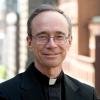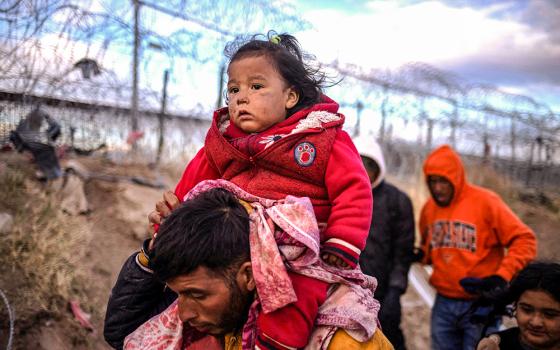In his choice of new cardinals, Pope Francis both respected tradition and broke from it.
In appointing only 16 new cardinal electors, Francis deferred to the rule established by Pope Paul VI that the number of cardinal electors should not exceed 120. In truth, the number will rise to 122 in February at the time of the consistory, but it will quickly get back to 120 in March when two cardinals reach 80 years of age, the age at which they lose their right to vote for a new pope.
The pope also respected tradition and the current rules governing the Vatican Curia by appointing four new cardinals, although he did pass over Archbishop Jean-Louis Bruguès, the Vatican archivist and librarian:
- Pietro Parolin, secretary of state
- Lorenzo Baldisseri, secretary general of the Synod of Bishops
- Gerhard Ludwig Müller, prefect of the Congregation for the Doctrine of the Faith
- Beniamino Stella, prefect of the Congregation for the Clergy
Except for Müller, these are men chosen by Francis. With these four appointments, the Curia will retain 34 percent of the cardinal electors.
When looking for candidates outside of Rome, Pope Francis had only one archbishop whom he had actually appointed, Mario Aurelio Poli of Buenos Aires, Argentina, whom he made a cardinal. For the others, he had to pick and choose from the appointees of John Paul and Benedict. Here, he was willing to break with tradition to get the men he wanted. His breaks with tradition were striking.
In Italy, Perugia received a red hat while Venice and Turin were passed over. Perugia has not had a cardinal since the mid-19th century. Here, Pope Francis chose a man in his own style, Gualtiero Bassetti, rather than the archbishops of the traditional cardinalatial sees. Including the three Curia cardinals, this makes four new Italian cardinals, ensuring them 24 percent of the cardinal electors. (Italy will lose one elector in March.)
In the rest of Europe, Francis limited himself to Archbishop Vincent Nichols of Westminster, to the delight of our UK readers. The rest of Eastern and Western Europe was ignored. For example, the pope even broke the 18th-century agreement between Portugal and the Holy See, codified by Clement XII in "Inter Praecipuas Apostolici Ministerii," that established in perpetuity that any new patriarch of Lisbon would be made a cardinal in the first consistory following his appointment.
Pope Francis set his eyes on archbishops outside of Europe, and even here, there were surprises.
The Philippines received another red hat, but not Archbishop Jose Palma of Cebu, as most people predicted, but Orlando B. Quevedo, O.M.I., archbishop of Cotabato. Korea also got a cardinal, which brings the Asian contingent to 11 percent of the voting cardinals. (Asia will lose one elector in March.)
Africa received two red hats: Archbishop Jean-Pierre Kutwa of Abidjan (Ivory Coast) and Archbishop Philippe Nakellentuba Ouédraogo of Ouagadougou (Burkina Faso). The second was not a surprise, but in order to go for the Ivory Coast, Francis had to pass over Cameroon, Angola, Ethiopia, Egypt and the Central African Republic.
Canada received a new cardinal but the United States got none, which may mean Detroit and Baltimore can no longer be considered cardinalatial sees.
All of the above appointments left only five red hats for all of Latin America, the continent from which Francis came. Even under a Latin American pope, it appears that Latin America continues to be the Cinderella of the Catholic church, with 40 percent of Catholics and only 16 percent of the cardinal electors. It did better under John Paul, when Latin American cardinals were 18 to 20 percent of the electors. So to the Francis surprises we can add that he did not use this opportunity to benefit more the part of the world from which he came.
In making the appointments in Latin America, the pope's choice of Archbishop Orani João Tempesta, O.Cist., of Rio de Janeiro, Archbishop Mario Aurelio Poli of Buenos Aires, and Archbishop Ricardo Ezzati Andrello, S.D.B., of Santiago were no surprise. Archbishop Leopoldo José Brenes Solórzano of Managua (Nicaragua) was also considered a possibility. But the pope surprised everyone with his choice of Bishop Chibly Langlois Les Cayes (Haïti), a man who is not even an archbishop.
Once again, Pope Francis is shown as a man who respects tradition but is willing to bend or break it when necessary to achieve what he wants. This of course is only his first crack at the College of Cardinals. Depending on how long he remains pope, he will have more opportunities to shape the college into a team supporting his vision of the church.
[Jesuit Fr. Thomas Reese is a senior analyst for NCR. His email address is treesesj@ncronline.org. Follow him on Twitter: @ThomasReeseSJ.]




